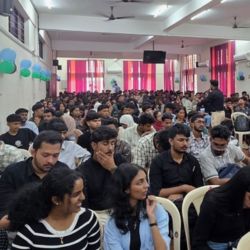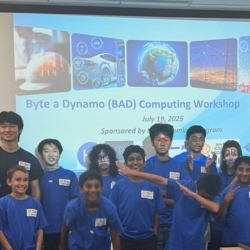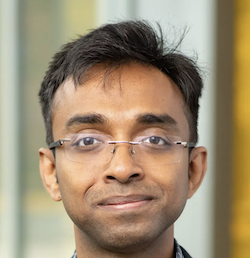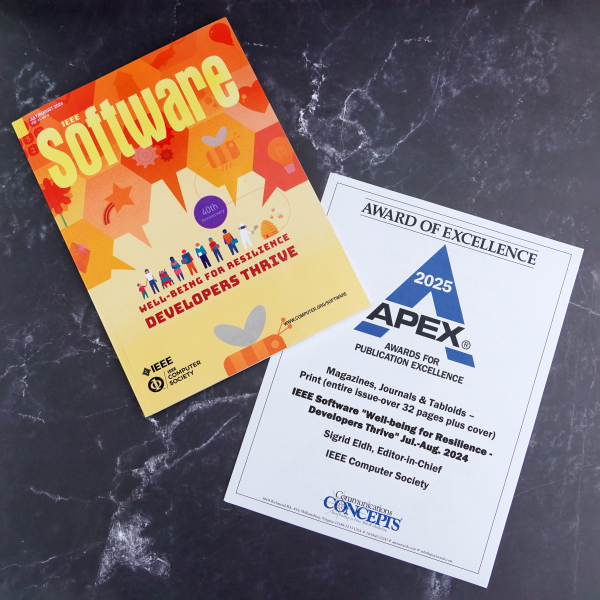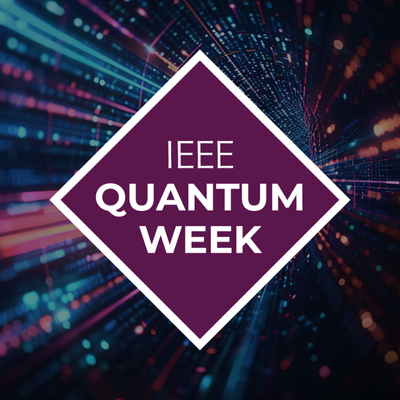Computing’s Top 30: Theofanis Raptis

Transitioning between two different cultures and professional roles—from working at a university in Greece to joining the National Research Council of Italy—presented Theofanis Raptis with several valuable lessons, including an understanding of what he calls an intellectual “fermentation” process.
Triggered by internationalization, bilateral cooperation, and cross-discipline collaborations, this fermentation included the dynamic exchange and blending of ideas across disciplines and cultures, leading to broader perspectives and creative drive.
It is, in a sense, a roadmap of how Raptis executes much of his groundbreaking research.
Raptis is one of Computing’s Top 30 Early Career Professionals.
In the Q&A that follows, he discusses his experiences with cultural transition and how it impacted his work. He also describes
- How optimizing the configuration of Apache Kafka clusters in the EU’s MARVEL project enables scalable, dependable data exchange across distributed producers and consumers
- His active involvement in P2P crowd charging work as part of the StandICT.eu effort to amplify Europe’s impact on global ICT standards—and how this project led to him serving as an StandICT.eu mentor
- How his paper on industry data management took a multidisciplinary approach that bridged gaps between the traditionally siloed fields of communications/networking and industrial manufacturing/automation
- His early work on the Control Cube prototype, a versatile hardware/software device to integrate conventional appliances and legacy systems into the IoT
Your work on the MARVEL project led to the HDD outcome being featured in the EU Innovation Radar. Can you elaborate on this outcome and its significance for smart city environments?
The MARVEL project was funded under the Horizon 2020 program of the European Commission and coordinated by the Greek research institution FORTH, with 17 industrial and scientific partners, including CNR. In short, modern information systems involve continuous data movement, from data sources—such as cameras installed along roads—to processing and analysis tools, such as software for counting passing vehicles. Managing these data flows efficiently is extremely challenging due to the large number and diversity of data types, which can range from temperature updates every few minutes to high definition image transfers every few milliseconds.
Along these lines, an innovative result highlighted by the Innovation Radar is the Apache Kafka-centric HDD: Hierarchical Data Distribution System, a systematic methodology in the context of real-time audiovisual data stream analysis in smart cities. Starting with a mathematical model of the data distribution problem, we considered both the characteristics of the services involved and the computing infrastructure available. Our research was automated and then validated through a software framework for reproducible experiments in a controlled environment, which is publicly available under an open-source license. Further details are available in the article “Efficient Topic Partitioning of Apache Kafka for High-Reliability Real-Time Data Streaming Applications,” in Future Generation Computer Systems.
HDD can be significant for smart city environments because it offers a novel and efficient approach to managing high-reliability, real-time data streams essential for AI/ML analytics in edge computing settings. By optimizing the configuration of Apache Kafka clusters—specifically the number of partitions and brokers—it balances resource utilization and application performance, enabling scalable and dependable data exchange across distributed producers and consumers. This system is particularly valuable for data-intensive smart city applications like traffic monitoring, public safety, and environmental sensing, where timely data processing is crucial.
As a StandICT.eu Fellow, you were involved in activities related to standardization in the UN’s International Telecommunication Union (ITU). How have such fellowships supported your work, and what was its impact on such international efforts?
My StandICT.eu fellowships have been instrumental in supporting contributions to the standardization activities of the ITU, particularly within the framework of the Technical Report YSTR.P2P-CC. This report focuses on the current state of peer-to-peer (P2P) crowd charging (see, for example, our article, “Balanced wireless crowd charging with mobility prediction and social awareness,” in Computer Networks) and the corresponding market needs, exploring the potential of wireless power transfer (WPT) for energy sharing in smart city environments.
The fellowships assisted active participation in the ITU-T study groups tasked with reviewing existing technological solutions, ongoing research, and recent standardization activities related to P2P crowd charging. The report aims to identify gaps and market needs in large-scale P2P WPT systems, considering innovative technologies such as inductive coupling, radio frequency energy harvesting, and laser-based power transmission. Additionally, the analysis includes considerations on battery aging mitigation and the integration of unmanned aerial vehicles as mobile energy hubs for charging devices in real-time urban environments.
By contributing to this standardization effort, the fellowships facilitated the transfer of research findings into the realm of an international standardization body, helping shape the landscape of energy-sharing systems in smart cities. Following this active involvement, eventually being selected as a StandICT.eu Mentor further extended my impact on this ecosystem. As a mentor, the role involves advising technical professionals seeking to contribute to global standards, providing guidance on navigating standardization processes, and helping align their work with the priorities of international bodies including but not limited to the ITU.
Your article in Future Internet was selected as an Editor’s Choice in 2023. What was the focus of this article, and why do you think it stood out to the editors?
The article, “Engineering Resource-Efficient Data Management for Smart Cities with Apache Kafka” in Future Internet, focuses on addressing the complex challenges of data management in smart cities. It explores the use of cutting-edge technologies such as Apache Kafka and Apache NiFi to optimize data acquisition, management, and distribution across multiple layers. The paper proposes a modular architecture that enables the processing of heterogeneous, real-time, and multi-modal data streams, which are essential for delivering reactive services like situational awareness, video surveillance, and geolocalization. These services, crucial for modern smart cities, need to process data quickly while maintaining privacy and security.
What I believe sets this article apart is its holistic approach to solving key issues in smart city data management. It provides practical solutions to handle large-scale data flows and offers valuable insights into overcoming challenges related to data storage, curation, and real-time processing. The multi-layer engineering solution proposed in the paper can support various smart city applications and provides general guidelines applicable to complex data flow tasks. The experimental results, derived from collaboration with leading industrial technical departments, demonstrate the scalability and applicability of the proposed architecture in real-world settings.
The editors likely selected this article for its significant contributions to the evolving field of smart cities, particularly for its resource-efficient and scalable approach to data management. The proposed system is aligned with the needs of smart city infrastructures, which require efficient handling of diverse, real-time data streams to support a wide range of services. Additionally, the paper’s interdisciplinary nature, bridging cutting-edge technologies with practical industrial applications, adds further value to the academic and industrial communities alike. The potential impact of this work on enhancing the operational efficiency of smart cities likely played a key role in its selection as Editor’s Choice.
Your article was named IEEE Access Article of the Week in 2019. Can you discuss the main contributions of this article and its impact on the field of networked industrial environments?
The scientific article, “Data Management in Industry 4.0: State of the Art and Open Challenges,” was recognized, highlighting its significant contributions to the understanding of data management in networked industrial environments. This work systematically surveyed recent advancements in data management technologies applied to Industry 4.0, providing a comprehensive overview of data properties—such as volume, variety, traffic, and criticality—and their associated enabling technologies across fundamental industrial use cases.
One of the main contributions of the article is the detailed taxonomy it offers, categorizing recent developments from the field level, deep within physical deployments, and up to the cloud and application levels. By examining industrial data architectures in terms of data presence, data coordination, and data computation, the article highlighted the degree of distributiveness and the distinct philosophies adopted in industrial environments. Another key impact lies in its identification of open research challenges, which have guided further research in the area. These challenges addressed critical issues like optimizing data flow in heterogeneous environments, ensuring data integrity and security, and improving scalability for complex industrial networks. The multidisciplinary approach of the paper, drawing from both communications and networking as well as industrial manufacturing and automation, helped bridge gaps between traditionally siloed fields, nurturing more integrated approaches to industrial data management.
The Control Cube prototype you contributed to was a semi-finalist in the IPSO Innovation Challenge in 2013. Can you describe the concept behind Control Cube and its potential applications?
The Control Cube prototype was a versatile HW/SW system designed to integrate conventional appliances and legacy systems into the Internet of Things (IoT) ecosystem. By leveraging Future Internet technologies like IPv6, the Constrained Application Protocol (CoAP), and the IPSO Application Framework, combined with off-the-shelf hardware components, it offered a low-cost, easily deployable, and plug-and-play solution that extends the IoT paradigm to include devices that were previously disconnected from networked environments.
The core concept behind the Control Cube was to act as a bridge between legacy devices and modern IoT systems. Built around an IPv6-enabled sensor mote platform, the device operated as a mini web server with a unique IPv6 address, capable of seamless communication with Internet-connected devices. This approach abstracted sensors, actuators, and appliances as web resources, making them part of a unified IoT framework. In practical applications, the Control Cube demonstrated its versatility in two key scenarios. Firstly, as explained in the IEEE conference papers “A holistic IPv6 test-bed for smart, green buildings” and “Decentralizing and Adding Portability to an IoT Test-Bed through Smartphones,” it had been used to create a smart room with minimal modifications, controlling lights, curtains, air conditioning, and ventilation based on human presence and environmental conditions, leading to significant energy savings. Secondly, as explained in the Computer Networks article, “Keeping data at the edge of smart irrigation networks: A case study in strawberry greenhouses,” it had been applied in a precision agriculture setting to optimize irrigation in a strawberry cultivation unit. Unlike traditional methods reliant on manual intuition, this approach enabled data-driven irrigation, resulting in more efficient water use.
Control Cube’s open and modular design had set it apart from proprietary solutions that often faced interoperability issues and high costs. Its adaptability and scalability had made it suitable for retrofitting existing buildings and infrastructure, particularly in smart buildings and industrial IoT contexts, where network cabling or structured wiring may be impractical. The prototype’s recognition as a semi-finalist in the IPSO Innovation Challenge in 2013 and its feature in a Wall Street Journal press release highlight its potential to reshape how everyday devices are integrated into IoT systems, making smart environments more accessible, efficient, and future-ready.
Obtaining the Italian National Scientific Habilitation in Information Processing Systems at the Full Professor level is a remarkable accomplishment. What were the key milestones in your academic journey that led to this recognition?
Obtaining the Italian National Scientific Habilitation at the Full Professor level represents indeed a remarkable academic accomplishment, shaped by several key features that reflect both the depth and breadth of one’s contributions to a given field. This journey is characterized by a strong publication record in top-tier scientific journals and conferences, with numerous papers that have made a significant impact on the scientific community. In my case, these publications span a quite wide range of topics within the domain, particularly in areas such as wireless networks, industrial systems and data distribution, contributing to the advancement of knowledge in the field of information processing systems. Additionally, active participation in national and international scientific conferences as an organizer, committee member, and speaker has further enhanced academic engagement and kickstarted extensive collaborations. Being involved in key events has allowed for the sharing of research outcomes, engaging with leading experts, and gaining valuable feedback, all of which have played a crucial role in shaping the trajectory toward this recognition.
Another significant component of the academic journey includes participation in editorial boards for prominent journals, such as Ad Hoc Networks, IET Networks, and IEEE Access. This involvement demonstrates a commitment to shaping the future direction of research and ensuring high-quality standards in scientific publications. Contributions to the peer-review process and editorial work have therefore strengthened credibility and involvement in the community. Moreover, a proven track record in managing and contributing to large-scale research projects has been pivotal in obtaining the habilitation. These projects have often been collaborative efforts with both academic and industrial partners, highlighting an ability to work across disciplines and contribute to high-impact initiatives.
As an Outstanding Associate Editor for IEEE Access in 2018, what do you believe are the most important qualities of an effective editor, and how do you apply them in your editorial work?
Effective editorial work requires a combination of technical expertise, critical evaluation skills, and a commitment to maintaining high-quality standards in scholarly publishing. As an Outstanding Associate Editor for IEEE Access in 2018, several qualities have proven essential in ensuring the integrity and impact of the peer review process.
Firstly, deep technical knowledge in the relevant field is crucial for accurately assessing the quality, novelty, and relevance of submitted manuscripts. This expertise allows for a better understanding of complex topics, helping to identify both the strengths and potential gaps in a submission. For IEEE Access, which covers a broad range of topics in engineering and technology, an interdisciplinary perspective is particularly valuable.
Secondly, objectivity and fairness are fundamental. Ensuring a balanced evaluation that fairly considers the merits of each submission, regardless of the authors’ backgrounds or affiliations, helps maintain the credibility of the publication. Providing constructive feedback to authors—whether recommending revisions or offering insights for improvement—supports their growth while upholding high standards. Additionally, effective communication skills play a key role in coordinating with reviewers, guiding them to provide detailed and helpful evaluations. Clear communication also helps in conveying editorial decisions transparently and professionally, enhancing a respectful and collaborative environment.
Last but not least, identifying and addressing potential misconduct—such as plagiarism, data fabrication, or unethical authorship practices—is also a critical responsibility. Detecting such issues requires a vigilant approach and familiarity with ethical standards in publishing. When suspected misconduct arises, collaborating with the journal’s ethics committee to conduct fair investigations and implement appropriate measures is necessary to maintain the integrity of the scholarly record.
Reflecting on your diverse experiences, from your education at the University of Patras in Greece to your current role at CNR in Italy, what are some key lessons you have learned, and how have they shaped your approach to research and innovation?
My transition from Greece to Italy, two European Union member states, involved three different dimensions: Firstly, navigating two Mediterranean countries with distinct organizational cultures—Greek organizations are often characterized by more locally managed processes, and Italian ones by more centralized flows. Secondly, shifting professionally from a university environment to a national state-wide research institution required adapting to a structured setting where formal procedures and regulatory frameworks play a significant role. And, thirdly, the gradual evolution across different research themes expanded technical expertise while reinforcing adaptability in rapidly changing fields.
Three valuable lessons emerged from these experiences. Firstly, experiencing diverse management and operational systems boosts personal flexibility and strategic thinking. Secondly, transferring insights from one system to another may enhance innovation, merging theoretical depth with practical relevance and diverse approaches to tackling challenges. Lastly, internationalization, bilateral cooperation, and cross-discipline collaborations can trigger intellectual “ζύμωση” (the Greek term for fermentation, broadly making parallels to the dynamic exchange and blending of ideas across disciplines and cultures), broadening perspectives and driving creativity.
Bio: Theofanis Raptis
Theofanis Raptis is a senior researcher with the National Research Council of Italy. He received his PhD from the University of Patras in Greece. He has published more than 90 articles on industrial, wirelessly powered, and sensor networks in a range of journals, conference proceedings, and books. He is also regularly involved in international IEEE- and ACM-sponsored conference organization committees in the areas of networks, computing, and communications, and has been active in the ITU as a technical report editor. Raptis was selected as one of the IEEE Computer Society’s Computing’s Top 30 Early Career Professionals for 2024. He has served as an editorial board member for Ad Hoc Networks (Elsevier) and as associate editor for IET Networks (Wiley) and IEEE Access (Outstanding Associate Editor of 2018).
Dig Deeper
To learn more about Raptis,
- See an overview of his research and activities at National Research Council of Italy
- Connect with him on LinkedIn
Over the next few months, Tech News will highlight different Top 30 honorees each week. For a full list, see Computing’s Top 30 Early Career Professionals for 2024.
To read more about how IEEE ComputerSociety supports our world and its innovative thinkers through funding, education, and activities, check out its other contributions to the computing community.


